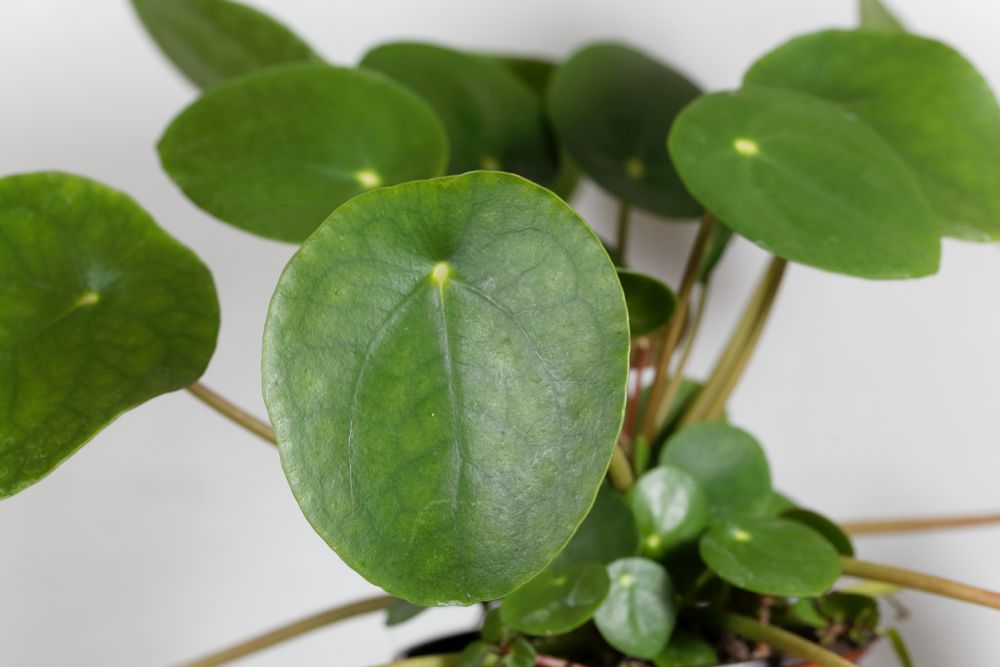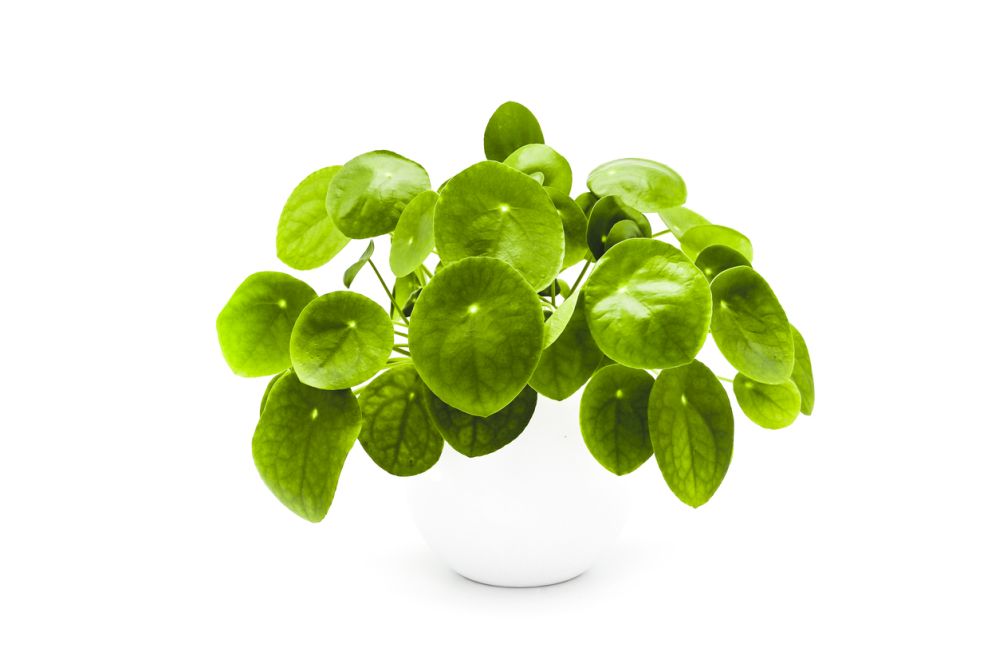Chinese Money Plant Care: How To Grow A Pilea Plant
The Chinese Money plant is one of those perennial succulents that you can grow in just about any medium. A large container, a small pot, or even a glass of water work just fine to grow this flowering evergreen succulent. The popularity of the Chinese Money plant is reflected in the many names it’s known around the world. From the Missionary Plant and UFO Plant to the Pancake Plant, or simply Pilea, all the names seem to fit this cheerful plant. If you fancy adding the Chinese Money plant to your collection of houseplants, you’ll be surprised at how easy and fast it grows. Those roundish green leaves growing on your window sill are a sight for sore eyes.
So what does it take for you to grow the Pilea in your office or home? Not much, really. Even a complete novice with plants will have no trouble starting this succulent and keeping it going successfully. Let’s see how we can do that.
Chinese Money Plant Basics
One of the common names of the Chinese Money plant (Pilea peperomioides) is the Missionary Plant. That’s a nod to the first person who discovered this plant. He was a Norweigan missionary named Agnar Espegren who came across the plant while traveling through China. He took it back home to Norway, from where it spread across Europe and made its way to the USA around the turn of the 20th century.
A fast-growing succulent, the Chinese Money plant reaches anything between 10 to 12 inches. The growing seasons are between summer and fall, after which the plant doesn’t show any signs of growth. It can grow erect, or you can train it to take any shape you like. The round leaves with their dark green shades are about 4 inches each and are a delight to look at.
According to Feng Shui practices, the Chinese Money plant is a source of good energy and invites good fortune to the home it grows in. Be that as it may, there’s no denying the ornamental values of this herbaceous perennial.
When the plant matures, it starts to grow pups about 2 to 3 inches long. You can use these to grow new plants and create a jovial collection of evergreen perennials. The pups will eventually branch out and give the plant a bushy appearance.
Pilea Varieties
With its success and popularity, it was almost inevitable that there will be cultivars. The plant that first came from the Yunan province in China has changed a lot over the years as new species were either cultivated or discovered. You can create a collection of the Chinese Money plants taking advantage of the various sizes and shapes of the leaves.
- Moon Valley (Pilea mollis): The leaves of this variety are distinguished with their uneven edges and deeply veined surfaces. That’s where the plant got its name.
- Pilea cadierei: Known as the aluminum plant, the leaves have white patches that almost look like metal. Each leaf has four of these silver spots giving it highly decorative values.
- Pilea nummulariifolia: A herbaceous perennial that has fast creeping qualities. Be careful where you grow this Pilea as it tends to spread fast and take over every inch of space available.
- Pilea peperomioides: The Chinese Money plant has perfectly round dark green leaves hanging over erect stems.
- Pilea microphylla: The leaves here are rather smaller than other varieties and tend to be a light shade of green.
How to Grow Pilea Plant
One of the easiest plants to grow, the Chinese Money plant, is quite rewarding. No previous gardening experience is required, and in no time, you’ll have a successful plant adding a shade of green to your decor. Here’s how you can do it in easy steps.
- From a fully grown Chinese Money plant, look for the baby Pileas or pups as they are often called. They are often located at the base of the stalk.
- Use a sharp knife to cut a pup as close to the stalk as you can without injuring the mother plant itself.
- Fill a glass with water and put the pup in it. Make sure the cut part is submerged in water. Keep the leaves above the water as they will easily rot.
- Keep the new plant in a well-lit spot that doesn’t get the direct sun.
- Change the water every day.
- After about a week, roots will appear at the end of the new plant.
- Fill a small pot with fresh soil and put the new plant in it. Press the soil lightly around the base.
- Water the pot enough to keep the soil moist.
- After a couple of weeks, the roots establish in the soil, and the plant will start to grow.
Chinese Money Plant Care
If growing the Chinese Money plant seems easy, caring for it is way easier. The two most important factors you need to pay attention to are water and light. The wrong light conditions in the room or office can impact the growth and even the shape of the plant dramatically.
Light
This is what you need to get right if you want to see your Chinese Money plant growing successfully over the years. I placed the first Pilea I grew in a sunny spot in my living room, and after a couple of months, the new leaves were way smaller and looked paler than the original plant. Furthermore, the old leaves lost their dark green sheen and turned yellow. So, avoid exposing this succulent to the sunlight. At the same time, you shouldn’t keep it in a poorly lit area where it barely gets any light. This, too will have the same effects as direct sunlight. If you get too much sunlight into the room, try pulling light curtains over the window to cut down on the glare.
Water
While it starts its life in water, the Chinese Money plant doesn’t like to get its feet wet. When you water it, make sure the soil gets soaked. But after that, you should wait for the soil to go dry before you water it again. It’s a tricky balance, but it’s the only one that ensures the plant doesn’t get waterlogged. In the fall and winter, when the temperature drops, the plant doesn’t need as much irrigation as it does in the spring or summer. If this succulent gets dehydrated, the leaves will droop, and the stems become wobbly. That’s a good sign you need to water it. Keep in mind that the leaves will also droop when you overwater the pot. So always check the soil to know the cause of the drooping leaves.
Humidity
The Chinese Money plant thrives in normal humidity levels. Even in an office where the air conditioning systems suck the humidity out of the air, the Pilea will grow without any problems. You’ll have an issue only if there’s too much humidity in the place. The leaves will look sickly pale, and the new shoots are often smaller and yellower than the previous generation of leaves. These are often perfect conditions for mold and root rot. What this means is, you shouldn’t grow the Chinese Money plant in humid places such as bathrooms and kitchens.
Soil
As a herbaceous perennial, the Chinese Money plant can grow in almost any kind of soil. Any potting mix will do as long as it’s not too acidic. The soil should be well-drained. If you have clay or packed soil, you can add a one-third portion of perlite to loosen it and improve aeration. This is important for the new pups to grow. Heavy soil will smother new growth and limit the number of baby Pileas you have. Make sure to repot the plant every couple of years when the roots outgrow the current pot. Use fresh soil every time you repot it.
Temperature
What we said about the sunlight and humidity also applies to the temperature. The Chinese Money plant doesn’t need a high temperature to thrive, but it will also not survive in cooler areas or in cold temperatures. Anything below 55 degrees Fahrenheit is considered too cold for this evergreen succulent. So move it away from the air conditioning shaft, so it doesn’t get the cold draft. When it gets warm, the plant gets thirsty a lot, so you need to pay attention to watering it on time.
Pests and Diseases
We already mentioned in passing some of the common problems you would have with the Chinese Money plant. Root rot is at the top of the list. It’s often the result of overwatering the plant or using poor-drained soil. Make sure the pot has drainage holes at the bottom, and the soil is well-drained. Other issues include the following:
- Curled leaves syndrome: It’s a problem that you get when either there’s too much light in the room, or the light isn’t enough. The leaves will either curl inwards or outwards. Adjust the light in the room so that there are no glare or dark corners either.
- Brown leaves: They are often the result of physical damage to the plant. If the pot is near a wall and the leaves scrap against the wall or pieces of furniture often, this leads to brown spots on the leaves. Move the plant out of the way and make sure it has enough space around it.
- Pests: Usually, aphids and thrips are the common pests that attack the Chinese Money plant. Use neem oil or a swab dipped in alcohol to rub the stems and leaves and kill those pests.
- Fungal diseases: These are rare. Mold often spreads over the leaves in high humidity and poor ventilation, such as if you keep the plant in a dank bathroom. Move the pot to an airy spot to get rid of this problem.


